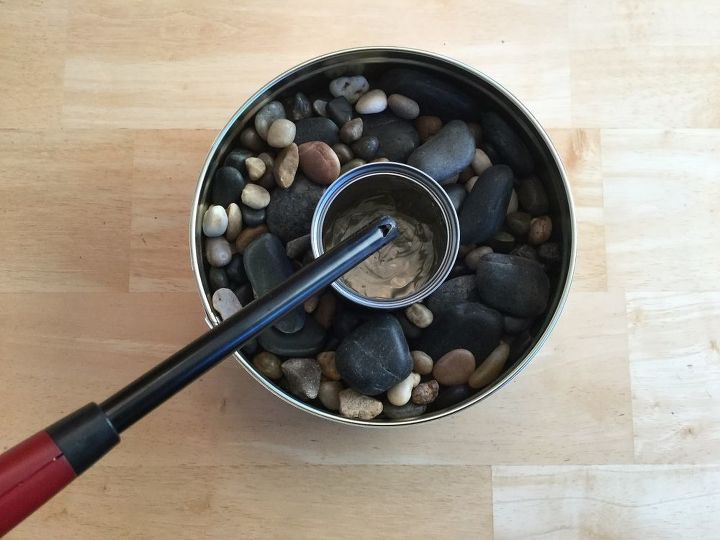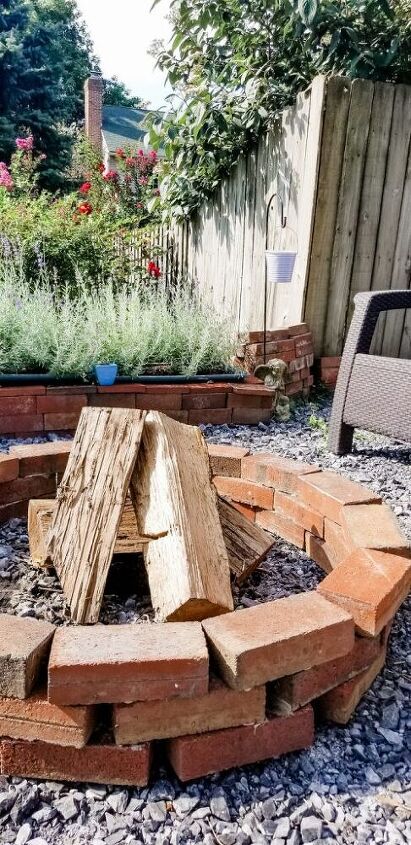10 Clever Ways to Heat up Your Home on a Budget
Welcome to our guide on insulating your home on a budget through do-it-yourself projects. Today, we will explore a range of cost-effective solutions to keep your home warm and cozy without straining your finances.
From clever techniques like indoor/outdoor fire bowls and basement vents to practical projects such as insulating crawl spaces, attic doors, and outlet covers, we've got you covered. Discover creative ideas to winterize your garage door, craft your own curtains, rugs, and personal space heaters, all aimed at maximizing energy efficiency while minimizing heating costs.
Let's delve into these innovative DIY projects and transform your home into a cozy haven while saving money in the process.
1. Build a desk size personal space heater
This DIY personal space heater by Chas is a simple and affordable solution for warming up your personal space.
With just a few materials like tealights, terra cotta pots, and an apple slicer, you can create a portable heater that can be easily moved around. It's perfect for keeping your hands warm or adding extra warmth to a small area. Get tutorial here
2. Make a Simple Indoor/Outdoor Fire Bowl
Here's another brilliant heating project by Chas! A DIY indoor/outdoor fire bowl that is simple and affordable and adds both warmth and ambiance.
Using a cookie tin, rocks or sand, and hand sanitizer, you can create a safe and inexpensive fire source. It's perfect for emergency situations, power outages, or even for roasting marshmallows and making s'mores. Get tutorial here
3. Add Heat to Your Basement
In this DIY project, you can learn how to add a vent to your basement's exposed ductwork for additional heat.
By using a ceiling and wall register, cutting a hole in the heating duct, and securing the vent in place, you can improve the warmth in your basement.
However, it's important to exercise caution and consider seeking professional help if needed. Get tutorial here
4. Build a Brick Fire Pit
In this DIY project by Ahna Fulmer, you can learn how to make a fire pit using leftover bricks.
By stacking the bricks in layers, filling the gaps, and adding landscaping construction adhesive, you can create a permanent fire pit in your backyard. Simply fill the center with gravel, and you'll have a beautiful and functional fire pit that eliminates the issue of rusting bottoms. Get tutorial here
5. Craft a Terra Cotta Space Heater
Discover how to create a warm and cozy terra cotta space heater with common materials in this DIY project led by Amanda C.
By assembling terra cotta pots, a threaded rod, nuts, washers, and chain, you can create a heat source that can warm up a room. The space heater is fueled by tealights placed on a saucer and can be adjusted to control the temperature.
It's a cost-effective and fun-looking alternative for heating a specific space in your home. Get tutorial here
6. Winterize Your Garage Door
Valerie Burge shares her experience winterizing her cheap garage door to make it more functional and comfortable during the cold Canadian winters.
She addresses gaps and snow infiltration by replacing the rubber strip at the bottom with layers of foam tape, achieving a tight seal. For insulation, she uses polystyrene sheets cut to fit the door panels and secures them with construction adhesive. She also seals the sides of the door with polystyrene strips. The result is a significantly warmer garage that allows her to use it as a workshop even in low temperatures.
The winterization efforts prove effective and well worth the investment of time and materials. Get tutorial here
7. Insulate a Crawl Space
Alicia W shares her project of insulating the access door to her crawl space for improved energy efficiency.
She addresses gaps and lack of insulation by removing old insulation, marking where the door frame meets the door, and attaching foam panels to the door using screws and painter's tape. She also insulates the door handle, caulks the edges of the panels, adds rubber tubing, and applies a door sweep to ensure a complete seal.
The result is a fully sealed door that prevents air leakage and improves energy efficiency, making it ready for winter. Get tutorial here
8. Seal Your Electrical Outlets
Hometalk Highlights presents an easy and affordable trick by Becky at Flipping the Flip to insulate outlet covers for better heat retention in your home.
By adding insulation to electrical outlets, you can prevent heat from escaping through gaps. The process involves removing outlet covers, preparing and attaching insulation covers, and re-attaching the switch plates.
This simple project can make a significant impact on heating bills and keep you warm and cozy. Get tutorial here
9. Fashion Drop Cloth Curtains
Danya from @avintageflarefarmhouse shares her DIY drop cloth curtains project, inspired by the popular trend on Pinterest and Instagram.
With a desire for privacy and an affordable window treatment, Danya opted for drop cloth curtains, which are no-sew and budget-friendly. The materials needed include drop cloth curtains, curtain rods, café hooks, a tape measure, a ladder, and an assistant if possible. The curtains can be customized with different overhang options and hung using café hooks.
It's a simple and cost-effective way to achieve a charming and personalized window treatment that keeps out the draft. Get tutorial here
10. Weave a DIY Rope Rug
Michelle from @lookwhat_i_found shares her DIY rope rug project.
Unable to find the desired rug in natural/creamy colors, she decided to make one herself using cotton sash cord and a hot glue gun. She formed circular patterns with the cord, adding loops and small circles to create a unique design. The rug measures 115cm in diameter and required approximately 8 rolls of cord.
Rugs are an excellent budget-friendly option to add warmth to your home, making them a practical and stylish choice for heating while staying within your budget. Get tutorial here









